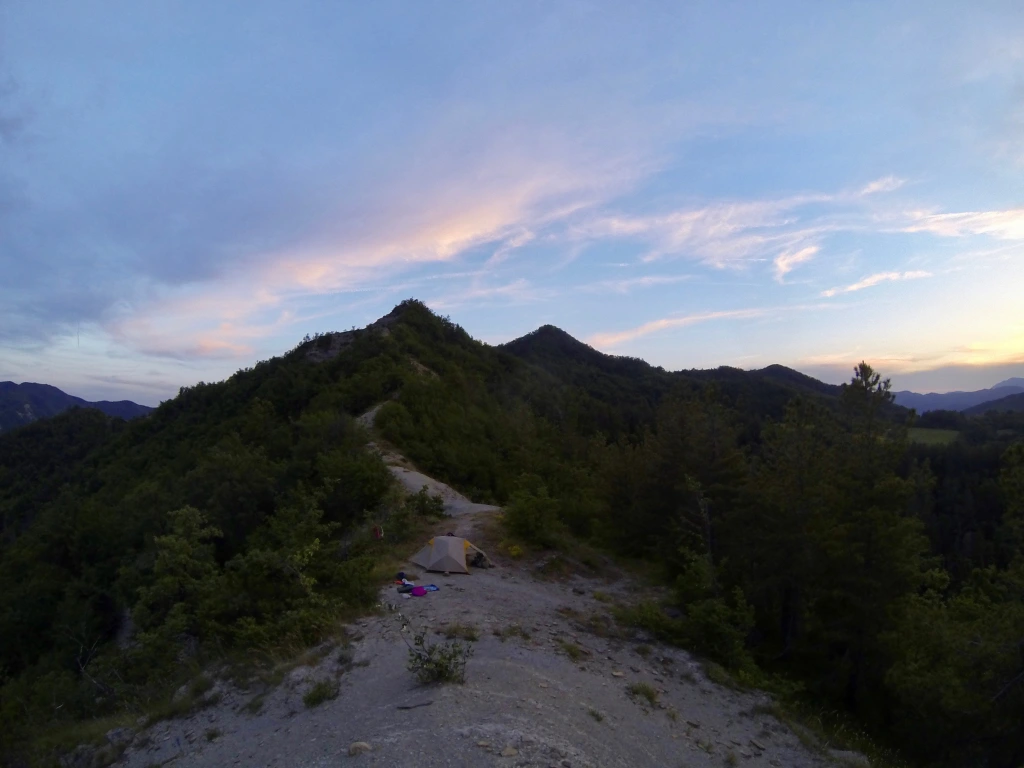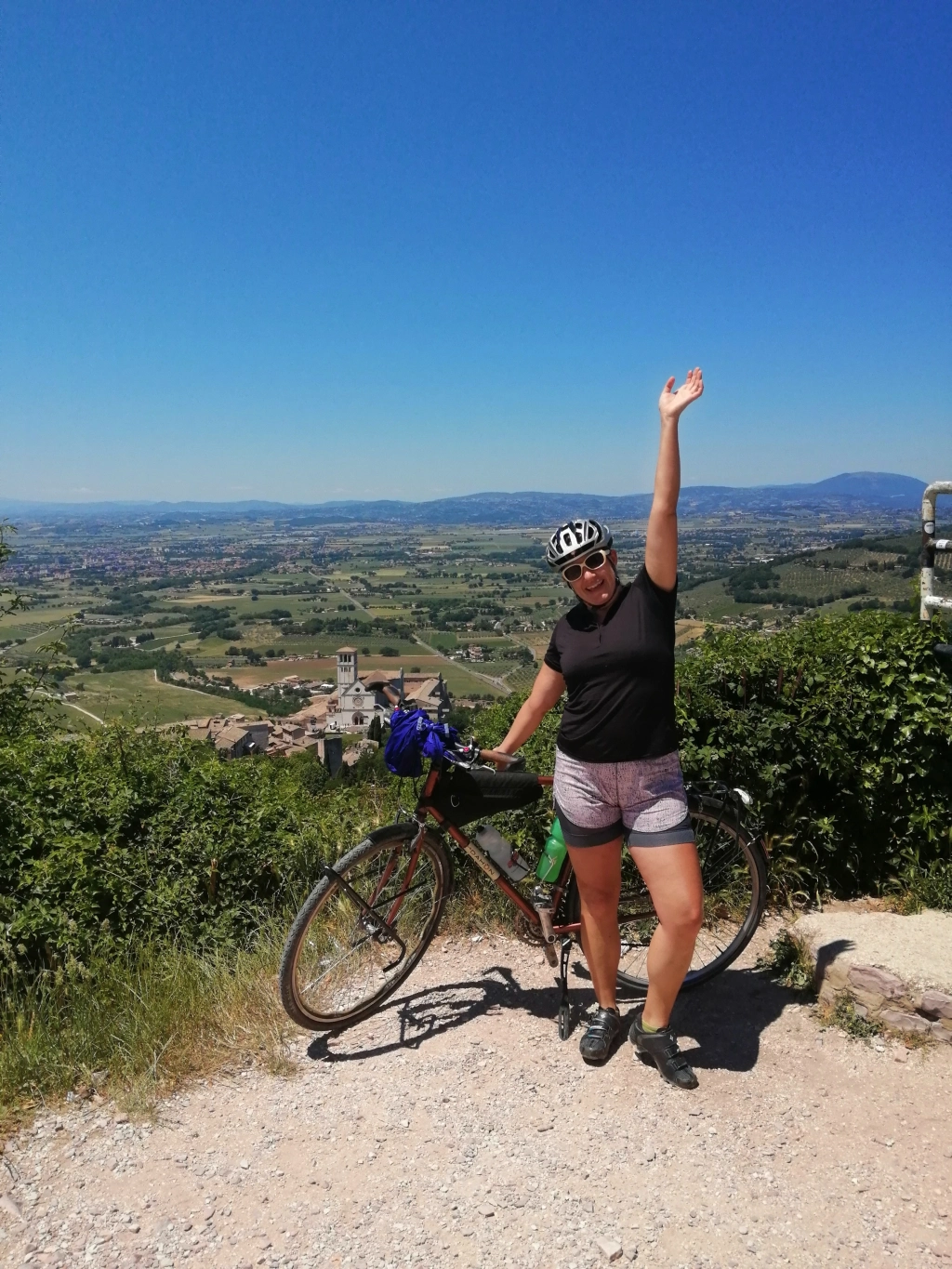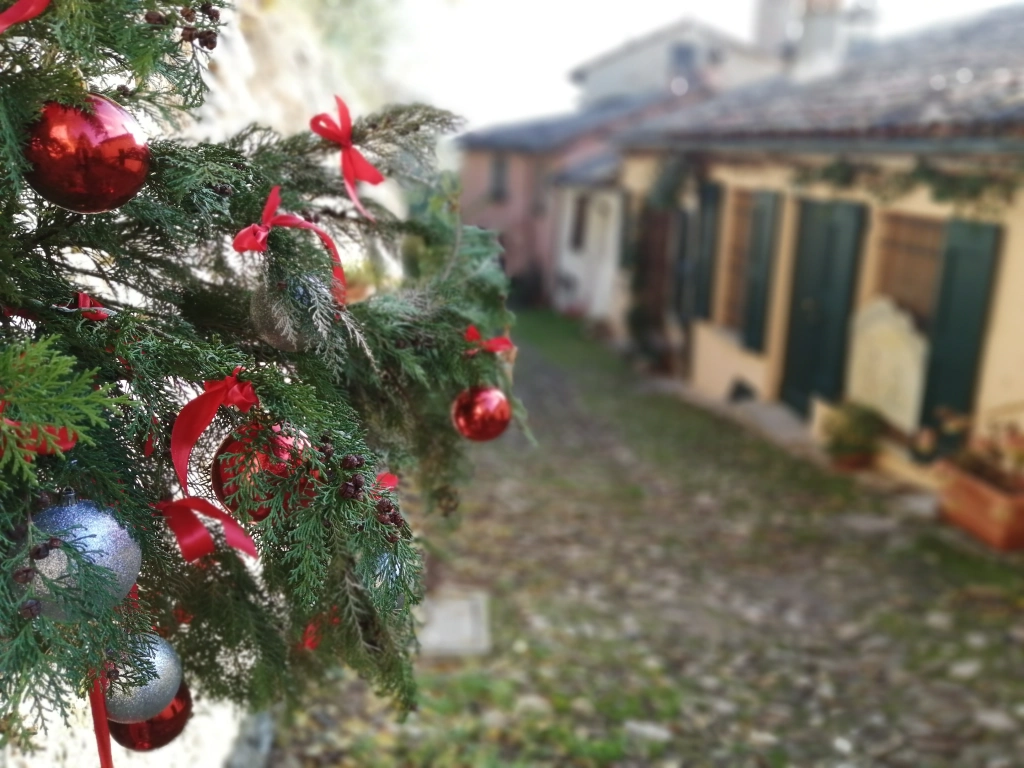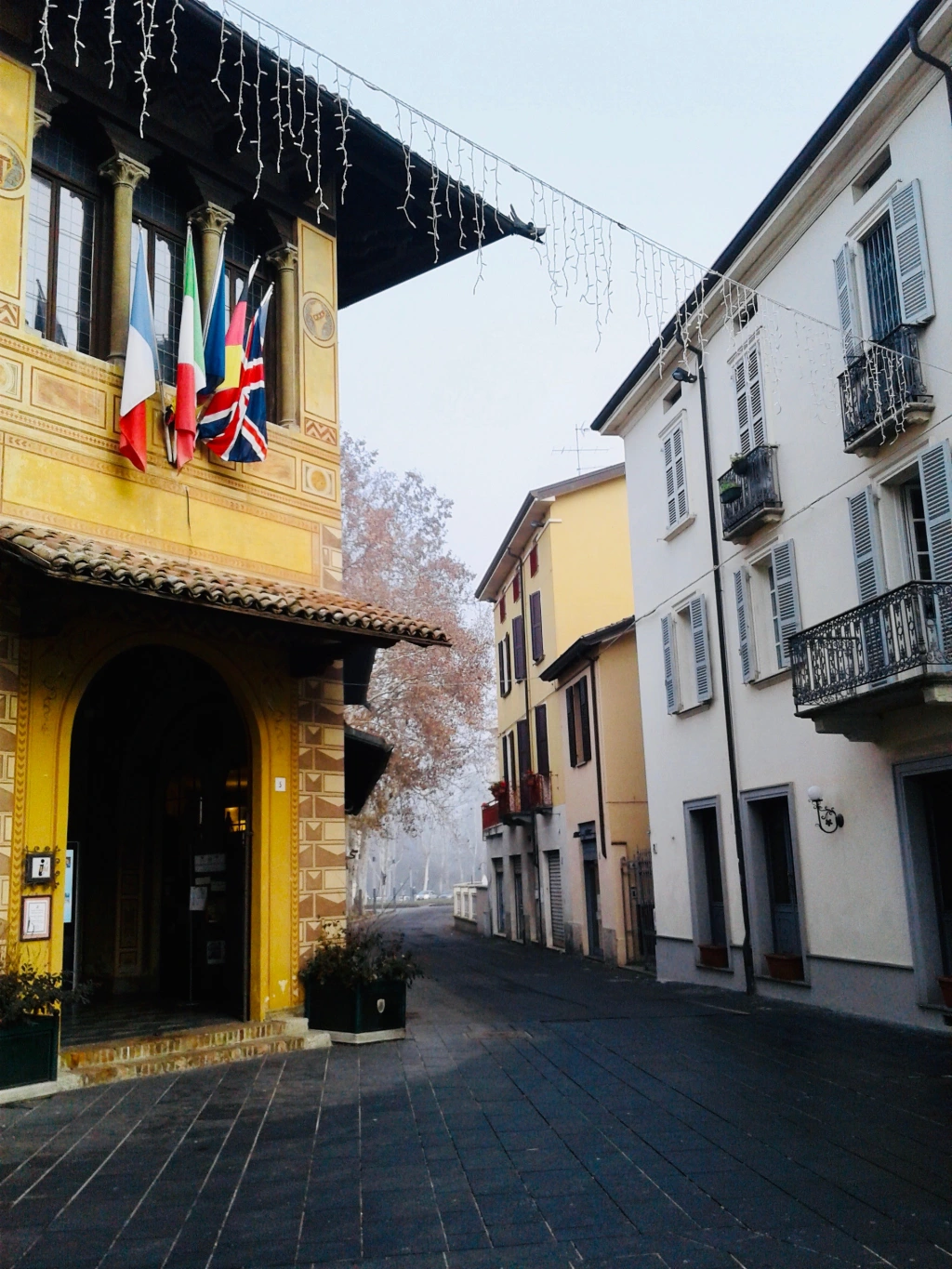9 Ways Women Can Safely Camp Alone
My friend Cristina, or Cri, is an incredible woman. You would never guess that she is 50-something years old looking at her bright eyes, smooth, tanned skin and above all, feeling the energy and strength she exudes. She’s raised four incredible children, one of whom, Irene, is mostly paralyzed on the left side of her body. Irene became like a little sister to me after we three (plus two cats) survived Italy’s three-month lockdown in 2020.
Cri is currently arranging horseback riding lessons for Irene at a stable outside of our northern Italian town called Faenza. This opportunity would kill two birds with one stone, as Irene adores animals and the stable caters to disabled kids like her.
Cri admitted she had reservations over a glass of Sangiovese the other night. If Irene fell, she could get seriously hurt. “But I can’t say no to this experience just because I think, ‘What if this or that happened?’”
Incidentally, that is how I feel about life and therefore everything I do with it — including traveling alone. It is true that doing so as a woman, I am more vulnerable than a man would be. As a white chick with white chick privilege, I also acknowledge that my comfort level is based on my experience moving through the world as a white woman can. Yet an overarching anxiety about traveling alone seems to transcend race, age and background for many women I know. But how many of our fears are legitimate? How many have we been taught to believe? Which fears can we mitigate in order to do what we desire to do?
As the world opens up again, I want to empower other ladies to venture forth alone and feel good about it. This blog is specifically targeted at those who want to spend a night under the stars, but where you begin on your journey of solo discovery starts with you. First, ask yourself three questions (which I later intend to expand upon with another blog):
1. What would I do/where would I go if I had no limitations?
2. What are my limitations (fear, money, health problems, etc)?
3. What do I feel comfortable doing right now?
Now that you’ve marinated on what you want to do, let’s ease some of the fears involved in solo travel of any kind. Many of these tips are good practice when voyaging alone, regardless of whether said voyage involves a tent.
P.S. I invite any dudes reading this to take any advice that serves them, and/or share this blog with their lady counterparts.
1. Trust your gut

You know that little voice in your head? The one that’s easy to ignore because it doesn’t always make sense? Turns out, it’s almost always right.
For any of you just joining us, I rode my bicycle alone across America from Berkeley, California to St. Augustine, Florida. Each time I heeded my intuition things went swimmingly–from feeling good about accepting lodging from a stranger I met on the road to the complete opposite. It’s true that I never had tangible confirmation about the offers I turned down. But I also never once found myself in a serious pickle (excluding weather and animal-related pickles) during those four and a half months on the road.
Our western world brains are taught from early on to believe in what our five senses can confirm. The more “woo woo” stuff, from intuition to that which could only be labeled magic, are often lumped in with luck or coincidence. Or, addressing the latter, something unfeasible or downright evil. But I’ll be the first to say there’s more to our world than what we can physically perceive. After all, it got me from Berkeley to St. Augustine not just in one piece, but in better shape physically, mentally and spiritually than when I departed.
2. Believe that you will be safe

Some things really do just happen to us. Cars break down. Relatives get sick. Jerks dump us. While this is true, our thoughts about these events can shape both the way we experience them and what happens from that moment on.
Let me give you an example. You’ve just ordered a massive bacon cheeseburger, french fries and a Coke. However, you didn’t work out that day so you might be thinking, “This meal is going to make me so fat. Tomorrow I have to exercise super hard.” In that case, you might feel guilty as you mow down that burger.
Or instead, you could say to yourself, “This burger is going to be delicious and I am craving it, so I deserve it.” With this inner dialogue, I have no doubts that burger is going to be the most enjoyable gastronomic experience of your life.
In short, what you believe often is your experience. If you commit to believing that you will be safe, you will be more relaxed and open to enjoying the adventure. A tranquil state will also help keep you safe; you’ll be able to observe what’s going on around you without feelings of paranoia, fear and nervousness encroaching on your judgement.
Besides all of this, denying the fact that your thoughts have power actually denies you power. When you reclaim the idea that you control both your reactions to life’s lemons and your ideas about what’s possible, you empower yourself.
3. Be aware of what’s around you

Now that you’re in the right frame of mind, let’s decide where to call home for the night. Pitching a tent in a campground is one thing, but wild or guerilla camping is another kind of beast. There are no facilities such as bathrooms or even picnic tables, which can take some getting used to. Vast stretches of nature can be an unnerving for folks who aren’t used to either the deafening silence or the conversations of mysterious critters. What helps is knowing how to choose a good campsite, ensuring an enjoyable night and minimal opportunities for mishaps.
An ideal temporary nest involves more than finding the flattest spot on earth for your tent. The rest of this process largely includes having a good look around. Glance up: are there any broken branches caught in the trees above you? If it’s windy, you might want to pick a spot that isn’t underneath those so-called “widow-makers” or any other creepy-looking dead trees (snags). Is there a storm coming in? Might not be the right moment to set up shop in the temptingly level, soft bottom of a dry creek bed. If you’re in the dessert, watch out for cactus, stickers and beds of delicate cryptobiotic soil crusts, or “desert crust.”
Aside from camping in the middle of bumf*ck nowhere, you might have to lay your head alongside a road or near a town. To avoid unwanted attention, don’t stake your tent alongside a road or parking lot or anywhere visible from where you are standing on the road/in the parking lot. If your intuition is waving a red flag, make sure there are no cars or humans around when you turn off the main road or duck into the woods. Then, always remember to survey the scene: look up, down and around before deciding where you’ll hang your hat.
One thing I am always attentive to — at camp, on the way there, while hiking or even in a city — is where there is and isn’t good cell service. Every so often, I just glance at the bars on my phone and then look around. If things go south, and even if I have to backtrack a bit, I’ll remember that by the cave or abandoned house (for example) there was strong cell service.
4. Ask other local women for advice

Whenever possible when traveling, I like to grill the locals. They’re the ones that know where to find the tastiest cannolo in Agrigento, Sicily, the best restaurant in Austin, Texas or the most refreshing freshwater cenote outside of Tulum, Mexico. I often find the local watering hole or bar the perfect place for more attention and advice than I actually needed.
However, when I want to talk camping, I find a local woman. I’ve found other ladies instinctively tend to send me to a nice, safe, hidden place to snooze away the night.
5. Keep the “door” open at night

If it’s not too cold, I leave one side of the tent fly (the outer, waterproof layer of the tent) tied open at night. That way I get a bit more airflow on sweaty summer nights, and if anything is moving around outside, I’ll likely hear it. I’ve also been able to ogle deer, elk, wild boar and foxes through my the mesh inner wall of my tent without scaring them off with its surprisingly loud zippers.
6. Know your wild animals
Speaking of critters, this is one of the elements other women seem to be apprehensive about. In general, however, most animals want nothing to do with humans because we suck. That being said, any animals with young should be avoided (snapping that pic of grazing baby moose will not be worth being ripped to shreds seconds later by notoriously aggressive mama moose).
Animals that do get close are often looking for food, So, the best way to prevent close encounters of the wild kind is to stash your food well. Something akin to a stuff sack sealed up tight usually provides enough of a barrier for smaller animals like rodents. I like to keep it in my tent with me and use my human sucky-ness as extra deterrent. However, medium-sized critters can be more tricky. In California, I witnessed a racoon pull over two bicycles that were locked to each other in search of a forgotten Kit Kat bar. If racoons are a problem (as they are along the California coast where campers regularly feed them), it might be best to take your food out of the tent and hang it from a tree.
If you’re in bear country, you will definitely need to make a “bear hang.” This is a fancy term for finding a tree that is far enough away that a bear notices it and not you, tall enough that said bear can’t reach it standing on its hind legs and memorable enough that you can find it the next morning. With bears, it’s best practice to hang both food and toiletries, as any such strong smells can attract them.
Otherwise, specific advice on wild beasts depends on where on this glorious planet you’ll be camping. In Southeast Asia or Australia, for example, a bit of research on distinguishing poisonous from innocuous snakes and insects might be warranted. In America’s southwest, it might be worth glancing at what to do if you happen to encounter a mountain lion.
7. Make strategic friends

At campgrounds, I make friends with camp hosts and fee booth staff (they are often locals, or at least snowbirds, who know the area). Camp hosts often patrol the grounds and just as frequently offer to also swing by and check on me. In Globe, Arizona the camp hosts even offered their trailer’s couch in when the temperatures dipped below zero degrees Fahrenheit.
Police and fire stations are another good place to find allies. Often when I ask about camping beside the facility, I find myself the queen of a patch of manicured grass. If all else fails, station staff always know a hidden spot in which to camp and will also swing by during their nightly patrols.
I’ve noticed that the more relationships like these that I make, the better (always following my intuition, of course). This practice forms a kind of safety net of people who even continue checking on me as I journey on.
8. Have a check-in buddy

I feel very fortunate to live outside Faenza, Italy. Nearby are steep hills and picturesque valleys that constantly beckon to obsessed cyclists like me. I often ride solo and therefore always inform a friend before I shove off. I admit I have been responsible for a few heart attacks when I forget to check back in eight hours later, because I was starving and went for a pizza, then showered, then Netflix…
I also try to be clear about where I’m going, so if the sh*t hits the fan, at least somebody will know where the fan is.
9. Be prepared
Organization has never been my strong suit, to be honest. But I know from experience that our weaknesses, when properly improved upon, can become new strengths. In traveling alone, I realized I had to learn to get organized. This served me well with more involved undertakings like my bike journey coast to coast. As aforementioned, asking other cyclists, travelers and locals about their experiences or the road ahead was an integral part of this process.
Preparedness also allowed me to stop wherever I wanted, as I already had the food, gear and water I needed to comfortably ride out the night. It also meant I could make just one trip in (arriving) and one out (departing) from campsites near overly curious passersby.
I still don’t plan every day’s route or accomodation, but at least having a vague idea made my experience–and that of my hosts–more seamless. Knowing at least the basics in terms of bike maintenance made me more confident when crossing vast swatches of nothing. Keeping an eye on the weather and studying the terrain prepared me physically and mentally and helped keep me safe, as I was less apt to be taken by surprise.
Part of this included perfecting the art of getting oriented (aka not relying on Google Maps). As I mentioned in my recent interview on The Loud Women’s Club podcast, learning to navigate is not only good practice: it’s empowering as hell. Carrying a paper map as backup is never a bad idea, nor is employing navigation software (I am quite fond of Komoot).

All around us, there are signs of new life. Flowers are blooming. Baby birds are chirping. Spring rains are falling. In some places, vaccinations are becoming more widespread and restrictions are lifting. In short, there is a sense that our lives might soon bloom again, too. I know this means that many of us will take to the road or the skies again. I hope it also means more of us women will venture forth however we see fit: safely, joyfully and boldly.





Leave a comment